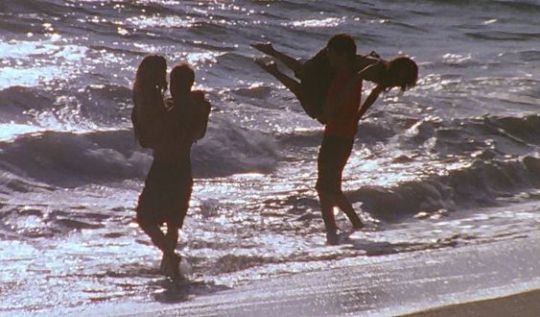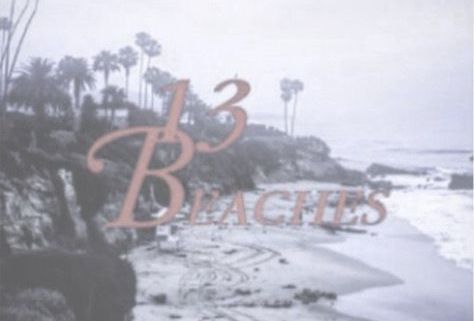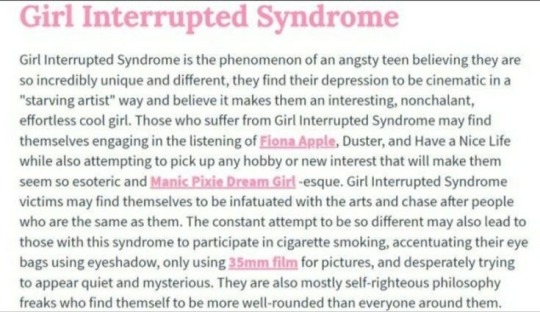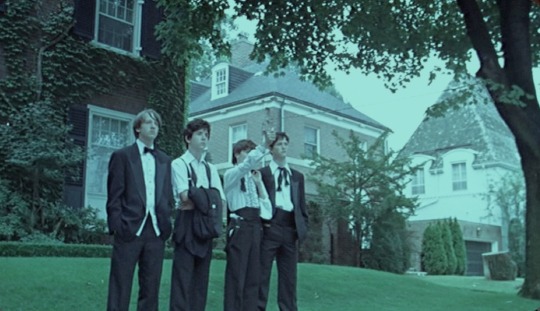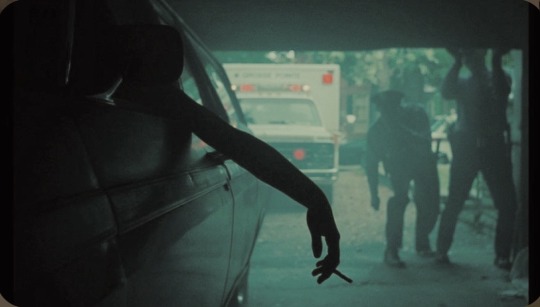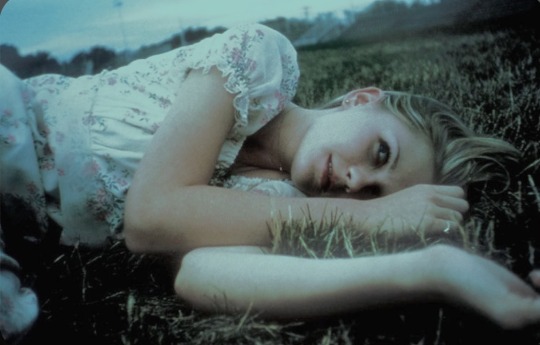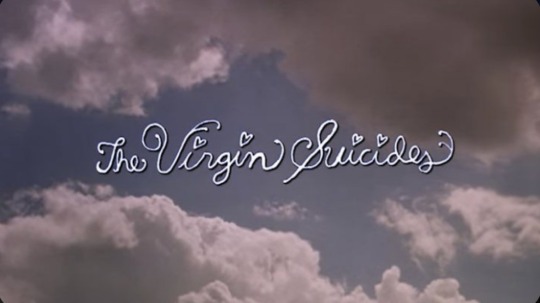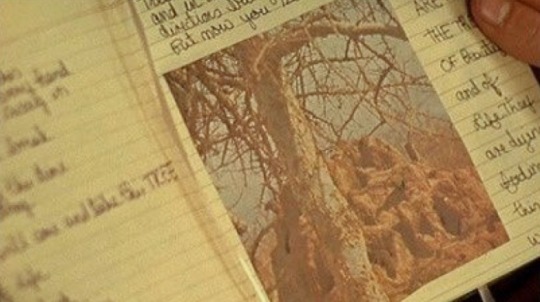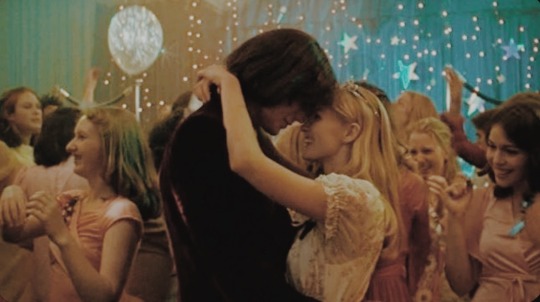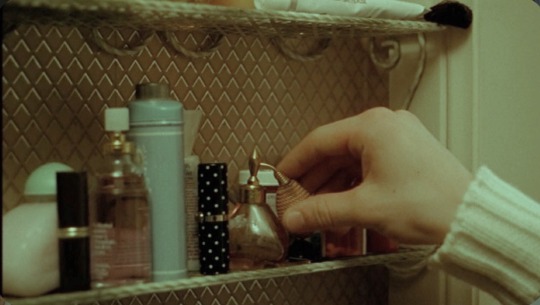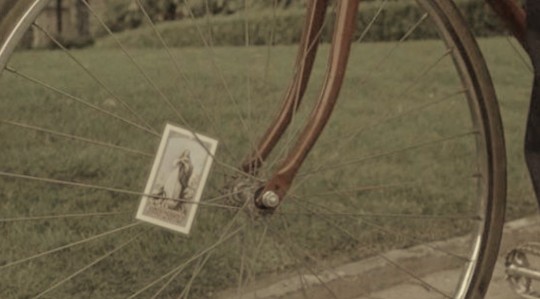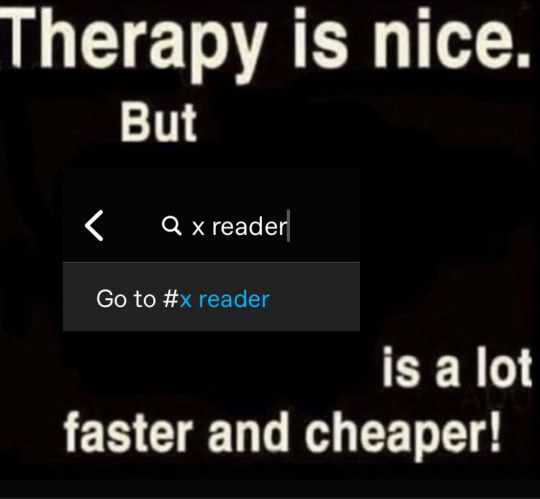Text

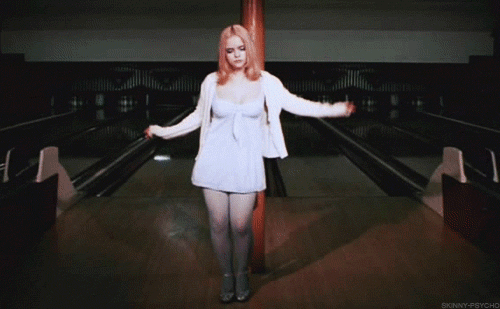
me 5 minutes after I said I was gonna kms
౨ৎ˙⋆.˚ ᡣ𐭩
9K notes
·
View notes
Text

yeah right, he fucking loves me
#painting#ethel cain#girlblogger#classical art#oil painting#coqeutte#dark academia#religion#midwestern gothic#bring back 2014#i love you#crush
0 notes
Text
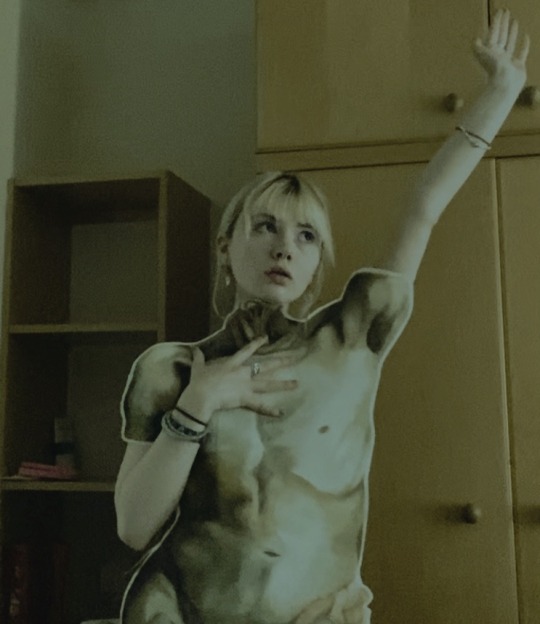
these crosses all over my body
#ethel cain#familytree#midwestern gothic#joan of arc#traditional art#oil painting#bones and all#love#girlblogger#coquette#dark academia#classical art#mannerism#renaissance#photography
2 notes
·
View notes
Text
Somewhere amongst the undergrowth, far far away, I hum luscious harmonies to the birds,
Tweeting their affirmations as twigs are lain upon my chest to nurse their young,
Bleaching salt lingering upon the earth, between your gums, umami season for ripe game.
You unpick mothers labour, button by button, cut and sup with your stomach in knots, churning.
Hung in a cradle by my mother below the holly bush, a yew taps upon stained glass and
Somewhere its Christmastime, eyes agaze as she watches her darling girl upon the lectern,
Spouting empty words of gospel into the haze of incense, chocking upon the word of God.
Jeremiah you are not she who raised me, mother upon daughter making feast of flesh.
You would not hold me as they had after I could run no more, two thirds their summer daughter.
Vanished.
Newborn at 17, killed in infancy, what have you done now? Kissing me goodbye one last time as the
promise adventure weighs closing eyes. Please just carry me in from the car, place me down gently upon the
cast iron tub, just as they did upon my dotty bedspread, tuck me in and keep me warm.
Am I making you feel sick? Do I linger, make you recoil just as my father had at the smell of nail
Varnish? Convulsive and longing for its insult once more, in sorrow I painted my last violet.
Chipped, sealed in evidence, mud deep below the bed, I seethe inside still, chained by my wrists and robed
in orange.
Unafraid now, nestled in the presence of my parents’ solace, tucked into bed below the church’s yew.

#poetry#religious trauma#god loves you but not enough to save you#ethel cain#televangelism#drabble#bring back 2014#childhood
2 notes
·
View notes
Text

Bibliography
98, D. M. (2021). Is anyone else the lolcow of their friend group? INCELS.IS.
Anon. (n.d.). The Babylonian Exile. Retrieved from The Jewish Virtual LIbrary : https://www.jewishvirtuallibrary.org/the-babylonian-exile?utm_content=cmp-true
Bolinger, H. (2023, September 7th). What Is Eschatology? . Retrieved from Christianity.com: https://www.christianity.com/wiki/christian-terms/what-is-eschatology.html
Coppola, F. F. (Director). (1992). Dracula [Motion Picture].
Darabont, F. (Director). (2010-2022). The Walking Dead [Motion Picture].
Dynamics, C. (2013). Tomb Raider. California USA: Square Enix .
Emily St, J. (2014, October 13). #Gamergate: Here's why everybody in the video game world is fighting. Retrieved from Vox: https://www.vox.com/2014/9/6/6111065/gamergate-explained-everybody-fighting
Ilott, S. (2019, August ). Postcolonial Guilt . Retrieved from Oxford Academic: https://doi.org/10.3366/edinburgh/9781474440929.003.0002
Karp, D. (2007-Current). Retrieved from Tumblr.com: https://www.tumblr.com/
Khaouli, M. C. (2022, August 8th). Ways Gen-Z are Changing Activism. Retrieved from BBC : https://www.bbc.com/worklife/article/20220803-gen-z-how-young-people-are-changing-activism
Klein, C. (2023, April ). Exploring the Christian themes in Chronicles of Narnia: How Narnia is a Christian allegory? Retrieved from Christian Educators Society: https://christianeducatorsacademy.com/exploring-the-christian-themes-in-chronicles-of-narnia-how-narnia-is-a-christian-allegory/
Lamb, A. (2023, OCTOBER ). Rise of the 'incels'. Retrieved from The Harvard Gazette: https://news.harvard.edu/gazette/story/2023/10/new-paper-explores-the-rise-of-incels/
Minkin, R. (2024, January ). PARENTS, YOUNG ADULT CHILDREN AND THE TRANSITION TO ADULTHOOD. Retrieved from The Pew Institute: https://www.pewresearch.org/social-trends/2024/01/25/young-adults-relationship-with-their-parents/
Nelson, C. (2023, May). A public orgy of misogyny”: gender, power, media, and legal spectacle in Depp v Heard. Retrieved from Taylor and Francis Online : https://www.tandfonline.com/doi/full/10.1080/14680777.2024.2304225
Nero, J. R. (2018). Embracing the Other in Gothic Texts: Cultivating Understanding in the Reading Classroom. JSTOR.
Nordin, I. (2020, april). How is agtekeeping holding the gaming community together? Retrieved from Study Breaks,Com: https://studybreaks.com/thoughts/gamers-gatekeeping/
Nurs, J. R. (2019, March). Journal of Research in Nursing . Retrieved from National Library of Medicine: https://www.ncbi.nlm.nih.gov/pmc/articles/PMC7932440/
Oswald, H. C. (2019, September 19). In search of the appeal of the ‘DILF’. Retrieved from Taylor and Francis online : https://www.tandfonline.com/doi/full/10.1080/19419899.2020.1769164
Remes, P. (2008). What is Neoplatonism? Retrieved from Cambridge University Press: https://www.cambridge.org/core/books/abs/neoplatonism/introduction/1C46044955090ABB4CD25D0B6F43A8BD
Robertson-Dworet, G. W. (Director). (2024). Fallout [Motion Picture].
Safai, Y. (2023, November 8th). What is Shadow Work? What does it do? Retrieved from Medical News Today: https://www.medicalnewstoday.com/articles/what-is-shadow-work#:~:text=Shadow%20work%20is%20a%20type%20of%20psychotherapy%20that,may%20refer%20to%20this%20as%20the%20%E2%80%9Cshadow%20self%E2%80%9D.
Sebastian, L. (2024). Hunger Hurts. Cannibals And Why We're Obsessed With Them . USA: https://www.youtube.com/watch?v=5Cu15KcPN4k.
The Fallen Woman . (2015, October ). Retrieved from Womens' History Network : https://womenshistorynetwork.org/the-fallen-woman-in-victorian-britain/
Thorslev, P. L. (1962). The Byronic Hero: Types and Prototypes. University of Minnesota Press.
Tiffany, K. (2022, January 15). HOW DID WE GET SO 'CRINGE'? Retrieved from The Atlantic : https://www.theatlantic.com/technology/archive/2022/01/cringe-culture-everywhere/621272/
Unknown. (2022). The reform movement . Retrieved from Jewish Virtual Library : https://www.jewishvirtuallibrary.org/history-and-overview-of-reform-judaism
Unknown. (continuous ). Machiavellianism. Retrieved from Psychology Today: https://www.psychologytoday.com/us/basics/machiavellianism#:~:text=Machiavellianism%20is%20a%20personality%20trait%20characterized%20by%20manipulativeness%2C,see%20other%20people%20as%20means%20to%20an%20end.
Various. (2013-Current). N/A. Retrieved from Kiwi Farms : https://kiwifarms.st/
Webb, J. (Director). (2023). The Last of Us [Motion Picture].
Webster, J. (1613). The Duchess of Malfi. Blackfriars, London, England.
0 notes
Text
"The Byronic hero, incapable of love, or capable only of an impossible love, suffers endlessly. He is solitary, languid, his condition exhausts him. If he wants to feel alive, it must be in the terrible exaltation of a brief and destructive action."
— Albert Camus, The Rebel
Fiction is often the pill case for revolution, an outlet providing its narrator a means for advocation under the whimsical façade of fairies and dragons. C. S Lewis, author of the Narnia Chronicles, presents a ‘supposal’ (Klein, 2023) for the demonstration of Christianity within the magical realm, his faith guiding the four children through ‘the other’ (Nero, 2018) and presenting a reality where the Neoplatonic ‘Good’ trumps all who oppose it, Western societies ideals of social conduct influencing and ultimately conquering the new world. While fiction can be read as a simple escape from the mundanity of modern capitalist structures, it is its separation from our common world that makes it so fulfilling to engage with, frequently using the readers' immediate environment and shared comforts as a foundation to develop its image; Apocalypse as a genre (its Romanised translation meaning Revelation), came to be via the first eschatological texts written by Jewish-Exilic prophets between 200-165bce, and provides an immediate substructure for modern apocalyptic books, Tv shows and Movies such as The Last of Us (2023-), The Walking Dead (2010-2022) and many more widely adored pieces of media. With the genesis of the apocalyptic genre rooted within the catastrophic antisemitic acts of Late Babylonian reform, there is a palpable consummation between social histories and religious allegory, a trend carried throughout history with almost all apocalyptic texts, whether presented through the threat of the Spanish Armada In Webster’s ‘Duchess of Malfi’(1613) or Stoker’s reflection of public hysteria surrounding the fallen woman (The Fallen Woman, 2015) and the colonial guilt (Ilott, 2019) of the fin de siècle in ‘Dracula’(1897). In an ever-growing landscape reliant on technological advancements, there’s ultimately a far greater accessibility to such media, both moral conduct and educational improvements throughout history allowing modern civilization to adapt these tales to a varied representation of the genre for individualist satisfaction. Within the excitement of infinitesimal representations of leads and anti-heroes, a prevalent theme has begun to emerge within the apocalyptic genre, one that is intrinsically linked to the trivialised internet term ‘DILFism’, referring to the generalised attraction towards or for exclusively older men within an overwhelmingly female audience of a significantly younger age. These often white, conventionally attractive older men are a significant drive in younger female audiences engaging in apocalyptic works that have conventionally been geared towards male interest, diverting the gaze often adapted for male interest (such as in the Tomb Raider games and films with the ultra-feminine and beautiful Lara Croft) to a shockingly attainable yet handsome father figure, there to be digested by audiences sexually while posing no threat to his young viewers by appearing adorably platonic. This Leading Man acts in innuendo, appealing to the taboo intrigue of young sexuality and providing a pacifying pathway for the viewer to enact her fantasy upon him, whether that be sexual or fatherly. While this trope could easily be banished to the realm of misogynistic irrelevance such as the vampire craze of the early 2000s was for its overwhelming digestion by young female audiences, the overlap between male-centered apocalyptic action media and its newly claimed female audience presents parallels to social metaphors that reflect the (aforementioned) Prophets of the Old Testament. The emergence of this new Byronic Hero within modern apocalyptic media represents modern fears, a religion on which an under-represented diaspora can exert a mythological metaphor. Despite their undeniable good looks, the men at the center of the female gaze within the apocalyptic genre give a deeper insight into the shortcomings of establishment, and in their placement within the end of the world, such figures can help guide a displaced generation into the promise of a better future.
Early 2000s media brought with it a wave of seemingly irreverent internet terms, which when used to describe the emerging cliques and fandoms for contemporary literature and films such as Twilight and The Vampire Diaries, saw an overwhelming demonisation of its content. Any misogynistic nuance was dissolved when considering the types of media being slated, internet forums and websites such as Kiwi Farms and Tumblr established for the sole purpose of slating media directed towards young, female audiences in the name of ‘Cringe Culture’. Where girls reading Stephanie Meyer and choosing to be team Jacob or Edward was the epitome of hysterical vanity, the same penalisation was not shown towards male-catered media, fights and deaths over football teams honoured as war victories as girls received insult over fandom blogs and posters on walls. While criticism of female-catered media is certainly justified in many respects (whether that be the glorification of eating disorders, negative body image, or the inherent controversy of consent between a 17-year-old girl and a 200-year-old vampire), chauvinist reactions to the female gaze prevailed, hence why as society liberalised the boundaries between gendered content (largely through the extensive piloting towards gender expression by feminist groups and non-binary protest), the leading man, our projective, father Byronic hero becomes the epitome of revolution within the segregated world of media consumption. Opinions, often held by men under the internet-slag terms ‘Incel’ or ‘Lolcow’, offer the opinion that the shared interest in these apocalyptic father figures by both men and women is inherently Freudian, that sexual drive and colloquially termed ‘daddy issues’ is the sole aspect in the consumption of male media by female audiences, inferring a shallowness to girl’s nature as they attempt to gatekeep. While there is irrefutable evidence of women being attracted sexually to the characters at the forefront of the argument, it holds no exclusivity; within these fantasy realms, physical attributes gain a certain irrelevance and whether battle-scarred or zoomorphised, each carries a similarly adoring audience. Within a society that values physical appearance so highly, the wastelands of an apocalypse offer the opportunity to alleviate the social pressures of conformity and the standards of beauty. With an estimated 8.6% of women suffering from disordered eating patterns (more than double the men affected), the survivalist landscape of a zombie apocalypse where self-preservation dominates institutional conventions becomes an unexpected comfort, a safe and Gothic green world upon which to live out the fantasy of escaping debilitating illness. With guides such as the war-torn Daryl Dixon or Rick Grimes from AMC’s The Walking Dead providing for you in this primitive, romanticised escape from your mental illness, it is no wonder so many girls seek comfort within the desolate apocalyptic landscape. Apocalypse here serves as an anecdote to a social structure dictated by advertising, women accounting for 80-90% of the $500 million beauty market fundamentally run by men. To find a man willing to accept you irrespective of looks, while depressingly vain when acknowledged, is undoubtedly attractive, affording viewers to see themselves as a woman worthy of survival while living in a society informed by looks. The Wasteland offers the ultimate validation for an impressionable young audience and finds a female majority following his character where the other sex finds it hard to relate, gendered advertising stretching rarely to male discredit as it does with women.
The promise of valued character over physicality is not the only unexpected comfort to come from the man at the forefront of the apocalypse; much of the character-archetype's allure comes from his ability to resolve crises and act in line with Western ideals of morality. Regardless of whether he has killed before or enjoys the violence of the landscape, he miraculously only harms those who rebut the American Dream, in many cases actively trying to restore it through seeking cures to outbreak or establishing towns on which to build a new, cleaner society. The congruence of societal reflection seen within all historical Apocalyptic fantasy media becomes apparent when considering recent social histories within the audiences' own lives. Many have lived through tragedy, viewers relating to fears of the pandemic, the prospect of war and its homely presence since the nuclear threat of the 1980s, and environmental meltdown a certainty at the hands of corrupt Machiavellian leadership. To see reality nullified and mythicised through the lens of fantasy makes a game of real fears, control passed to a righteous leader that works only for the common good. The control this lead plays in the survival of the apocalypse is perhaps his greatest attribute and, where his authority would be considered threatening in the current reality, only furthers his moral good within the ‘othering’ of Gothic apocalyptic fantasy; Joel Miller, the lead male character in the video game/TV series The Last of Us, is a prime example of the unsuspecting yet powerful virtue of the archetype. In his reluctant quest to move a young girl (Ellie) across the wasteland of zombie-ruined America, he presents an unfaltering physical and mental strength when facing those intent on harming the child. He is family-oriented, seeing something of his late-daughter in Ellie, installing such a strong, platonic bond between the two that he becomes the ultimate guardian, and audiences are assured that no harm should ever come to the child as long as she is with her adopted father, Joel; the transitional period between teen-age and adulthood is a turbulent time developmentally, The Pew Research Institute assessing that fatherly relationships with their daughters are significantly lower in civility than they are in mother/daughter relationships. Joel and characters like him provide an alternative, his nature an accumulation of desired or lost parental relations, not only installing him with the control a parent possesses but elevating the responsibility of the emerging adult viewer as they find comfort in rewritten and fictitious paternal relations. Joel is unfalteringly omnipotent, omnipresent, and benevolent towards Ellie, positioning his character in a prophetic light, deifying him through moral and physical superiority that seems worthy of worship, just as girlish fandom does within fan pages and forums. His fatherly devotion establishes zero sexual threat which, in a society where 15 million girls ages 15-19 have experienced rape and sexual violence, offers a reprieve from the everyday terror of assault, his character going as far as to hunt down and sadistically eliminate those who attempted to enact such abuse upon Ellie. Where indignation is a reality expected for many women emerging into adulthood and with ubiquitous fears of societal and environmental disestablishment, a character, morally grey as the ‘green world’ has allowed them to become, adheres to the scriptures of idealised, Christian virtue, allocating the same messianic image onto the aging survivalist as Aslan provided in C.S. Lewis’ Chronicles. Their characters are easily relatable, the main drive of the archetype is to reestablish a dignified control in an otherwise unstable landscape, a reflection of the transitional state of the age and location of his audience within a faltering capitalist civilisation.
The perfect image of this hero is disparaged only by his age and appearance, which, within a topography so ruinous as in the realm of fantasy, often only deepens his appeal; Domonique Lestel from the Edinburgh University Press supposes that young adult audiences reflect their opinions of the state of the common world into the media mythologies, meaning that romanticising the downfall of Institution makes it easier to digest, especially for those just entering a chartered marketplace disguised as the ‘9-5’. Through creating a limerent and metaphorical relationship with the characters that represent the shortcomings of society, it is easier to categorise reality in an attractive regard: falling in love with the principled ‘monster’ navigating the end of the world makes one’s journey a lot more palatable. Leaders of the Pagan faith endorse similar techniques of self-soothing and discovery through spiritual rituals such as shadow work, where a subject attempts to converse with the Freudian, psychoanalytic ‘Id’ with the aim of self-reflection and ultimately deliverance from repressed fears and desires stifling life’s natural transitions. Through the discovery of personal discomposure, one can reframe anxieties within superficial terrain, allowing audiences in such a landscape of apocalyptic fiction to transgress fear into desire. Indications of transgressive reframing are found throughout literary history, similar reflections of the female gaze can be witnessed through Lucy Westenra’s actions in Bram Stoker’s ‘Dracula’ (1897); in her somnambulic state, Lucy finds herself unchaperoned in the garden late at night, called to the wolf-ish form of Dracula through an uncharacteristic sexual appetite, actions which would ultimately lead to her untimely and violent death. Lucy’s representation as the ‘femme fatale’ within the epistolary novel was a pasquinade by Stoker, mocking contemporary views on the Fallen Woman and implicitly addressing the institutions upon which he as an author was extradited for his social politics. Through the lens of the Gothic, which as a genre, rests parallel to apocalyptic fantasy, the taboo is far easier indulged in, its separation from reality making the unknowable known and the offensive, satire, all containing still the knowledge that the text's themes are simply a facade held against the contemporary landscape. Our attraction to the hazy morals, animalistic forms, and violent delight of the apocalyptic male archetype is nothing more than a handsome way of exploring feared desire, whether that be sexual or in virtue, born from discomfort within the modern world with a value likened to religious practice, ancient or reformed.
With women often subject to the violent scapegoat of male-catered media, the stereotyped innocence of femininity is abolished when faced with the Western world’s destruction. It's unlikely that the shock of 19th century ‘flaneur-ish’ tropes depicting the slaying of the vicious, voluptuous, and ‘Fallen Woman’ with teeth lining her Vagina have vanished within the mindless violence of the modern slasher flick. Within the land of the undead, there’s an established law that human, moral or otherwise, boasts an absolute right to life above their late opposition; where the monster finds its origins in the misogynistic depictions of liberated women, the gleeful attitude towards the ‘boogeyman's’’ demise is perhaps a rather depressing extension of those same disparaging views towards, the colloquially and improperly termed, ‘fairer sex’. Women infiltrating these male-dominated spaces such as video game fandoms set within the apocalypse summons similar, but most certainly more trivial, trepidations as suffrage installed within the turn of the industrial century. The same threat to authority men faced in the political sphere during the late reign of Victoria is reproduced through retweets and dislikes, writers of modern apocalyptic media reframing institutional, often misogynistic tropes to seek a wider audience for capital gain, leaving many men stuck in the conventions of old to feel displaced themselves within ‘incel-ish’ apathy towards change. They find themselves unable to find the Femme Fatale represented within the media, disallowing an outlet to see women suffer nonsensically as was common up to as late as the mid-2000s (‘I Spit on your Grave’ [2010] being a continuously remade and adapted film that sees the liberation of its leading women to become a subplot to non-con/rape fantasy). The lead-male archetype is more than just a pretty face and a pat on the back for his audience, as his presence within the media is discouraging fantastical depictions of sexual assault and violence towards women for male satisfaction: his nonchalance and undiscriminating violence or absolute devotion towards social change add something of a Byronic hero to the framework of his media, providing a role model for young men, as well as an incentive to engage for women. The success of his character has lent itself to a lesser production of sadistic, prejudiced, and pornographic material influencing the impressionable generation, the irony of his place within a desolate, fictional society creating an antithetical impression on the reality of those who digest his plot.
The joy of seeing oneself accepted within celebrated media is an undisputable joy and the lessons one inadvertently learns through the exploration of a fictional narrative can uncover subconscious truths about the very foundations of society. In a world of strict binaries that install obtuse depressions and fears surrounding the transgressional stages we as a species collectively face, a character who holds a vicarious command over his landscape is a lot easier to adore than those with influence within reality, the fallible nature of his actions and desires forgivable through his distance from reality. Yet, it is his ability to collate the diverse nature of humanity that shows his audience a fairer, more accepting reality is possible, his bringing together of opposites through fandom blogs such as the one you are on currently, a much-needed reprieve from the segregated nature of our current political landscape. In a world of dog-eat-dog, the leading moody, fallible, scarred, violent, caring, volatile, sullen, moral, courteous, and devoted survivalist holds out his arm and holster to a new generation of isolated but hopeful youths to grab a hold on.
6 notes
·
View notes






